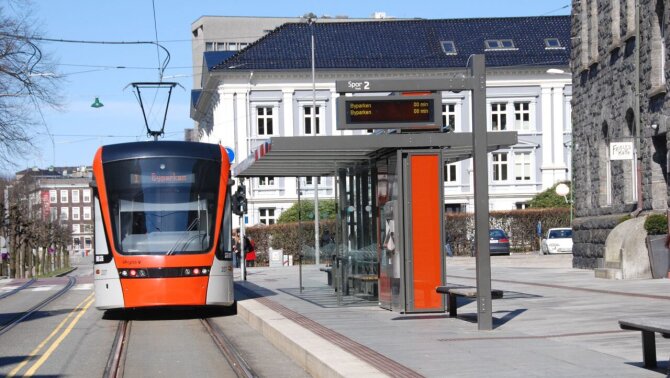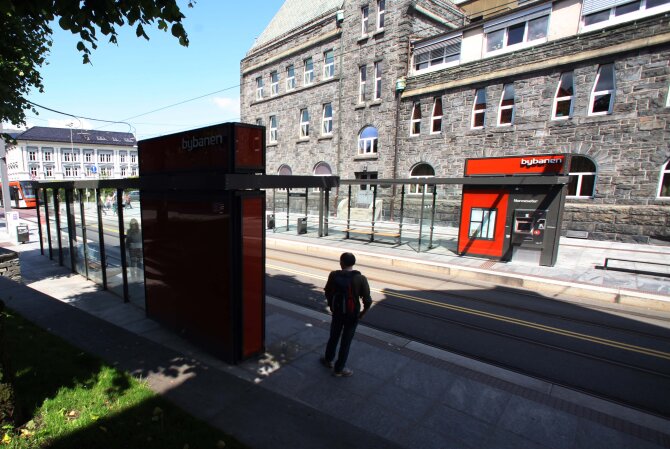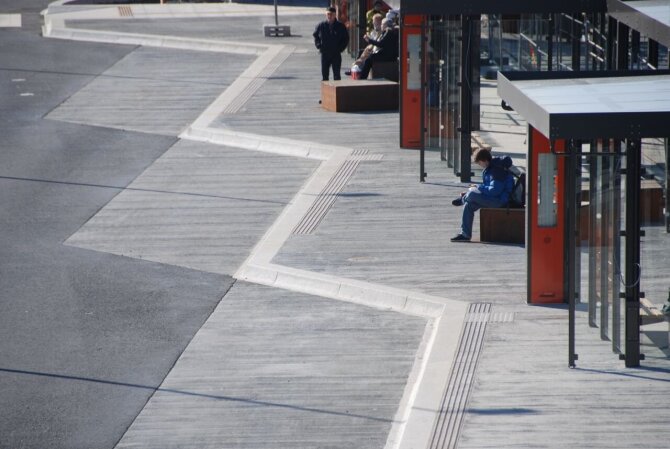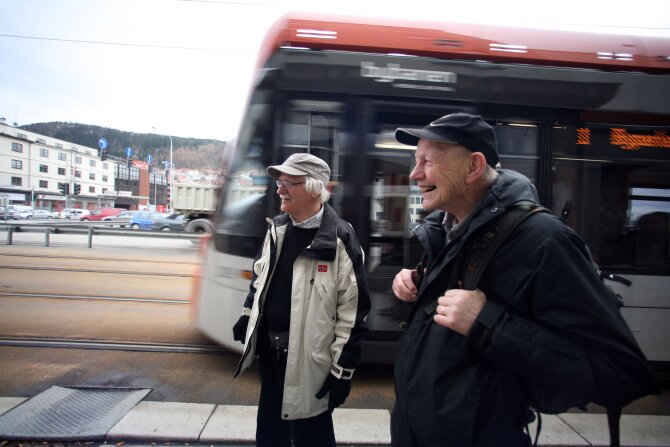Bergen Lightrail
The Bergen Light Rail is the first public transport system in Norway that utilises inclusive design at all levels.
Client: Bergensprogrammet (Hordaland fylkeskommune, Bergen kommune, Statens vegvesen)
Architects: Arkitektgruppen Cubus
Designers: Fuggibaggi, Kontrapunkt
Master Planner: Norconsult
Background: When planning the new light rail in Bergen began in 2006, inclusive design was set as a guiding philosophy throughout the process, right from the start.
Lead users:
Various groups from citizens of Bergen
Methods:
Collaboration with interest organisations
Awards:
Winner of the Innovation Award for Universal Design 2014 in the category of Transport.
14,9 M
passengers in 2018

CHALLENGE
When the planning of the new light rail began in 2006, inclusive design was not stated as a requirement. Many regulations must be considered in a project of this scale. This led to noise and resistance from politicians in the city, which had to be overcome before the project could start. This was followed by discussions about accessibility, the locations of stops near transfer points, transfers to bus and train and step-free transitions. The guidelines were broad, so the design team had to come up with many of the solutions on their own, based on their experience with various target groups.
In order to achieve this, inclusive design was set as a guiding philosophy throughout the process, right from the start.

APPROACH
A collaboration with FFO (the Norwegian Federation of Organizations of Disabled People) was established at an early stage and the design team showed them drawings and discussed the ideas with them. This collaboration inspired many new solutions. Representatives from FFO also took part in inspections and evaluations during the test period.
It has been important for us throughout to give priority to intuitive design that is relevant for everyone and not to create ideas for special target groups.

The first stage to be built was a line with 15 stops and a journey time of just over 20 minutes. The number of stops was increased to 20 in the second stage. This would not be possible without good passenger flow, and good passenger flow would not be possible without inclusive design. If people can find their way easily, it saves a lot of time.
We created good, efficient flow by using step-free access, step-free carriages and automatic door closing so that the tram can reach 15 stops in 20 minutes. Simple displays are important, as well as the effective sound and light signals we use for announcing stops and their names.
It would not have been possible for Bergen Light Rail to become reality, especially with a focus on inclusive design, without good management to coordinate all the components and the many subprojects. One of the light rail’s greatest aspects is the unity of the design. The signature colour is orange, which is easy to recognise. Together with the wave pattern, the colour is included in six subprojects: trademarked items, graphic profile, uniforms, elements at tram stops, landscape architecture and carriages. The users should therefore never doubt that they are orienting themselves within the Bergen Light Rail.

RESULT
The Bergen Light Rail is one of the most successful town planning projects in Norway after the Second World War. It made the city accessible for everyone, and passenger numbers have grown more strongly than expected. People living in Bergen have taken the light railway to their hearts, and the motto “Gå ta banen!” or “Take the tram!” has become a catchphrase.
Bergen Light Rail has succeeded, however, primarily because it uses inclusive design in a way that is barely noticeable, other than in the fact that everyone finds the system extremely easy to use. The comfort of the trams ensures that the threshold is low for people who may otherwise find travelling difficult, and it opens up the system for new users who might otherwise use other means of transport.
What’s important with the system is to get to your destination. When the users no longer have to think about timetables, they have one less thing to worry about, and this reduces the threshold for using the Bergen Light Rail.
The Bergen Light Rail has now achieved high social status, and in this way become the preferred method of transport for a large number of people. This is positive environmentally. Many of the homes and workplaces in Bergen will become increasingly accessible for people over the coming 15 years as the tram brings together the city in a novel and progressive way.